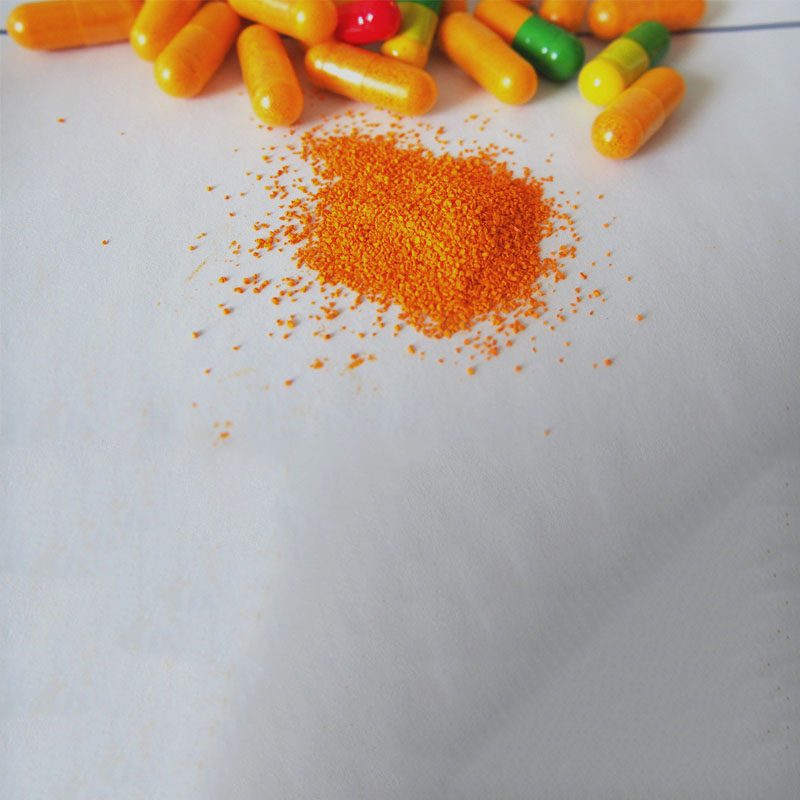- No. 268 Xianghe Street, Economic Development Zone of Xingtai city, Hebei 054001 China
- Byron@hbhongri.cn
Pure Turmeric Extract - 95% Curcumin, Lab-Tested Quality
What’s Really Inside Today’s Turmeric Supply Chain
Ask any formulator chasing clean-label color and potency: pure turmeric extract is having a moment. Natural pigments are edging out synthetics, and curcuminoid standardization has become less of a nice-to-have and more of a purchase order line item. I’ve toured plants that smell like warm ginger and citrus, and—honestly—the better vendors let you see their data before you even ask.

Product snapshot: Turmeric extract & Curcumin
Curcumin is the principal curcuminoid from Curcuma longa (ginger family). In real-world use, it’s a hybrid hero: herbal supplement, cosmetics pigment, and a reliable food flavor/color (E100 in the EU). From the Hongri facility in Hebei (No. 268 Xianghe Street, Economic Development Zone of Xingtai city, Hebei 054001 China), batches are typically ethanol-extracted, HPLC-verified, and packed for global routes that now demand better traceability than ever.
| Parameter | Spec (typical) |
|---|---|
| Curcuminoids (HPLC) | ≥ 95% (curcumin ≈ 75–80%) |
| Appearance / Color strength | Bright yellow-orange powder; E100 performance varies by matrix |
| Mesh size | 80–200 mesh options |
| Solvent residues | Meets JECFA/FCC limits; ethanol-based process preferred |
| Heavy metals | Pb < 1.0 ppm, As < 1.0 ppm, Cd < 0.5 ppm (lot COA) |
| Microbiology | TPC ≤ 10,000 cfu/g; Yeast/Mold ≤ 100 cfu/g; Pathogens: absent |
| Shelf life | 24–36 months unopened; cool, dry, light-protected |

Process flow (what really happens)
Materials: Curcuma longa rhizomes (traceable farms) → food-grade ethanol → purified water → optional carriers for dispersibility.
Methods: Cleaning and drying → milling → solvent extraction → concentration → crystallization → filtration → vacuum drying → milling/sieving → blending → final HPLC profiling → metal detection → packed in fiber drums with inner liners.
Testing standards: HPLC for curcuminoids (AOAC-validated methods), residual solvents per JECFA/FCC, heavy metals by ICP-MS, micro per ISO 17025-accredited labs. Service life depends on oxygen and light load—honestly, a nitrogen flush helps more than people think.
Where it’s used (and why)
- Supplements: capsules, tablets; sometimes paired with piperine or made hydro-dispersible for improved handling.
- Food & beverage: bakery glows, condiments, RTD beverages seeking warm gold; flavor plus color in one SKU.
- Cosmetics: serums, masks, and soaps chasing that earthy-gold hue (stability varies by pH, just note that).
Advantages: consistent chroma, robust COAs, and a mature global spec framework. Some customers say the batch-to-batch color is “surprisingly steady” even across different matrices.

Vendor landscape (quick read)
| Vendor | Curcuminoids | Certs | Traceability | Lead time | Customization |
|---|---|---|---|---|---|
| Hongri (Hebei) | 95% ± | ISO 22000, HACCP, Halal, Kosher | Farm-to-lot documents | 7–15 days | Mesh, dispersible, blends |
| Vendor B (global) | 90–95% | GMP, Halal | Lot COA only | 2–4 weeks | Limited |
| Vendor C (regional) | 85–95% | Basic FSMS | Partial farm data | 10–20 days | Custom color focus |
Customization & real-world tweaks
- Hydro-dispersible or granulated forms for beverage plants that hate dust.
- Color-intensity matching for brand consistency across dairy vs. bakery matrices.
- Blends with natural carriers to reduce clumping and improve pourability.
Case notes from the field
A Southeast Asian beverage line switched to pure turmeric extract from a 6% synthetic blend; sensory held, and color stayed within ΔE 2.1 over 12 weeks at 25°C. Another cosmetics client reformulated a wash-off mask—pH 5.5—to a 95% curcuminoid concentrate; staining dropped after particle-size tuning. “It just behaves better,” their R&D lead told me, which I guess is lab-speak for fewer headaches.

Compliance, testing, and paperwork (the part buyers check)
Expect COA with HPLC chromatograms, MSDS, allergen and GMO statements, and certificates (Halal, Kosher). Specs aligned with JECFA/FCC; E100 labeling in the EU; AOAC methods for assay; ISO 17025 labs for third-party verification. For pure turmeric extract, these aren’t extras—they’re table stakes.
Origin: No. 268 Xianghe Street, Economic Development Zone of Xingtai city, Hebei 054001 China
References
- FAO/WHO JECFA. Curcumin: Specifications for the identity and purity.
- European Commission. Regulation (EU) No 231/2012 – E100 Curcumin specifications.
- USP Herbal Medicines Compendium. Curcuma longa Rhizome monograph.
- AOAC Official Method 2016.16: Determination of Curcuminoids by HPLC.
-
Capsicum frutescens oleoresin – High Purity, Food GradeNewsNov.17,2025
-
Capsicum Frutescens Oleoresin – Natural Heat & FlavorNewsNov.17,2025
-
Peppereka Powder – Fresh, Vibrant Color & Sweet AromaNewsNov.17,2025
-
Paprika Oleoresin | Natural Red Color, Heat & Flavor BoostNewsNov.17,2025
-
Pure Turmeric Extract 95% Curcumin | Potent, Lab-TestedNewsNov.17,2025
-
Red Papper Pods – Premium Sun-Dried, Bold Heat & AromaNewsNov.10,2025







